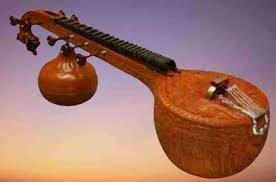About INDIAN musical instruments
1. ALGOZA
Developed around 7500 BC in Mesopotamia Civilization.
Alghoza is a paired woodwind instrument. It is traditionally used by Baloch, Saraiki, Sindhi, Kutchi, Punjabi and Rajasthani folk musicians. It consists of two joined beak flutes, one for melody, the second for drone. The flutes are either tied together or may be held together loosely with the hands.
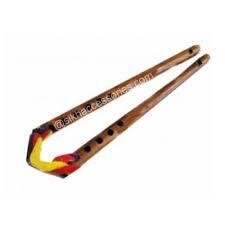 2. Bugchu
2. BugchuBugchu (Punjabi: ਬੁਘਚੂ), also spelled as Bughchu, Bugdu or Bughdu, is a traditional musical instrument native to the Punjab region. It is used in various cultural activities like folk music and folk dances such as bhangra, Malwai Giddha etc. It is a simple but unique instrument made of wood.
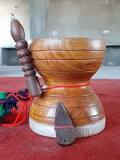
A bansuri is an ancient side blown flute originating from the Indian subcontinent. It is an aerophone produced from bamboo, used in Hindustani classical music.
It is referred to as nadi and tunava in the Rigveda and other Vedic texts of Hinduism. Its importance and operation is discussed in the Sanskrit text Natya Shastra.
A bansuri is traditionally made from a single hollow shaft of bamboo with six or seven finger holes.
Some modern designs come in ivory, fiberglass and various metals. The six hole instrument covers two and a half octaves of music.
The bansuri is typically between 30 centimetres (12 in) and 75 centimetres (30 in) in length, and the thickness of a human thumb. One end is closed, and few centimeters from the closed end is its blow hole. Longer bansuris feature deeper tones and lower pitches. The traditional design features no mechanical keys, and the musician creates the notes they want by covering and uncovering the various finger holes.
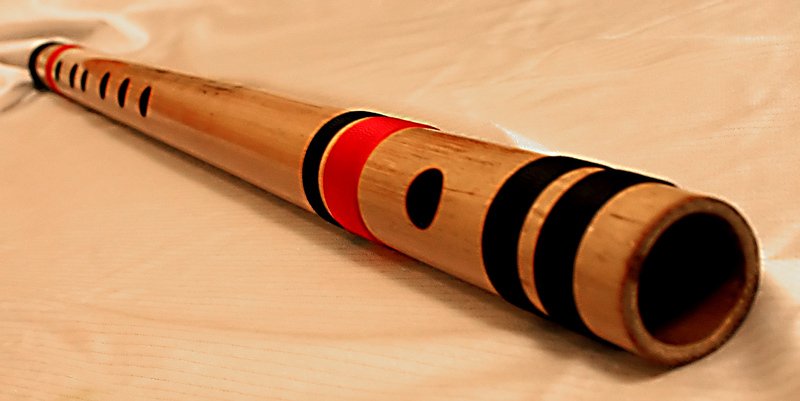
What is difference between Flute & Bansuri?
The concert flute (also known as classical flute) has many holes and keys. In fact, the Bansuri has 8 holes which are covered and uncovered in different combinations, and the concert flute has 15 holes throughout the instrument (not including the hole you blow across)
4. DHOLAK
The dholak is a two-headed hand drum, a folk percussion instrument. The instrument is about 45 cm in length and 27 cm in breadth and is widely used in qawwali, kirtan, lavani and bhangra.
The drum has two different sized drumheads. The smaller drumhead is made of goat skin for sharp notes while the bigger drumhead is made of buffalo skin for low pitch.
The two drumheads allow a combination of bass and treble with rhythmic high and low pitches. The body or shell of the Dholak is made of sheesham or mango wood. The larger membrane, played with a stick, has a compound (Syahi) applied which helps to lower the pitch and produce the sound. The smaller drumhead is played with the left hand which produces a high pitch.
A cotton rope lacing and screw-turnbuckle are used to release tension while playing. Steel rings/pegs are twisted inside the laces to attain fine tuning. Dholak can be played in three ways — on the player’s lap, while standing, or pressed down with one knee while sitting on the floor.
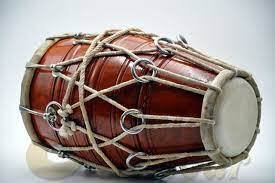
4. GHATAM
The ghaṭam (Sanskrit: घटं ghaṭaṁ, Kannada: ಘಟ ghaṭah, Tamil: கடம் ghatam, Telugu: ఘటం ghatam, Malayalam: ഘടം, ghatam) is a percussion instrument used in various repertoires across India. It's a variant played in Punjab and known as gharha as it is a part of Punjabi folk traditions. Its analogue in Rajasthan is known as the madga and pani mataqa ("water jug").
The ghatam is one of the most ancient percussion instruments of India. It is a clay pot with narrow mouth. From the mouth, it slants outwards to form a ridge. Made mainly of clay backed with brass or copper filings with a small amount of iron filings, the pitch of the ghatam varies according to its size. The pitch can be slightly altered by the application of plasticine clay or water.[1][page needed]
Although the ghatam is the same shape as an ordinary Indian domestic clay pot, it is made specifically to be played as an instrument. The tone of the pot must be good and the walls should be of even thickness to produce an even tone and nice sound.
Ghatams are mostly manufactured in Manamadurai, a place near Madurai in Tamil Nadu. Though this instrument is manufactured in other places like Chennai and Bangalore, too, Manamadurai ghatams have special tonal quality. It is believed that the mud is of special quality. The Manamadurai ghaṭam is a heavy, thick pot with tiny shards of brass mixed into the clay. This type of ghaṭam is harder to play but produces a sharp metallic ringing sound which is favored by some players.
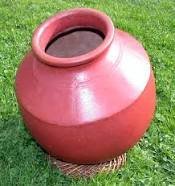
5. MRIDANGAM
The mridangam is a percussion instrument of ancient origin. It is the primary rhythmic accompaniment in a Carnatic music ensemble. In Dhrupad, a modified version, the pakhawaj, is the primary percussion instrument. A related instrument is the Kendang, played in Maritime Southeast Asia.
During a percussion ensemble, the mridangam is often accompanied by the ghatam, the kanjira, and the morsing.
Etymology
The word "Mridangam" is formulated by the union (sandhi) of the two Sanskrit words mŗt (clay or earth) and anga (limb), as the earliest versions of the instrument were made of hardened clay.
Legend
In ancient Hindu sculpture, painting, and mythology, the mridangam is often depicted as the instrument of choice for a number of deities including Ganesha (the remover of obstacles) and Nandi, who is the vehicle and follower of Shiva. Nandi is said to have played the mridangam during Shiva's primordial tandava dance, causing a divine rhythm to resound across the heavens. The mridangam is thus also known as "deva vaadyam," or "Divine Instrument".[citation needed]
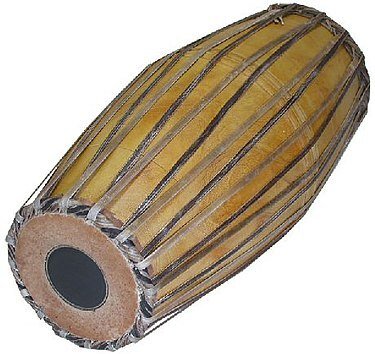
The mridangam is a percussion instrument of ancient origin. It is the primary rhythmic accompaniment in a Carnatic music ensemble.
Who invented mridangam?
The origin of mridangam goes back to the Indian mythologies wherein it is stated that Lord Nandi (the Bull God), who was the escort of Lord Shiva was a master percussionist and used to play the mridangam during the performance of the " Taandav " dance by Lord Shiva.
The size of the mridangam is one of the important factor for the sound it produces. The pitch of the mridangam varies according to its size. Dholak whereas is a derived instrument. The Dholak (sometimes dholaki) is a classical North Indian hand drum.
6. NADASWARAM
The nādasvaram, nāgasvaram, nātacuvaram, nāyanam, nāgasvara, or variously spelled as nadaswaram, nadhaswaram, nagaswaram, nataswaram and nathaswaram, is a double reed wind instrument from South India. It is used as a traditional classical instrument in Tamilnadu, Andhra Pradesh, Karnataka, and Kerala.
What is the meaning of nadaswaram?
Nadaswaram (plural nadaswarams) An Indian wind instrument with a large flaring bell.
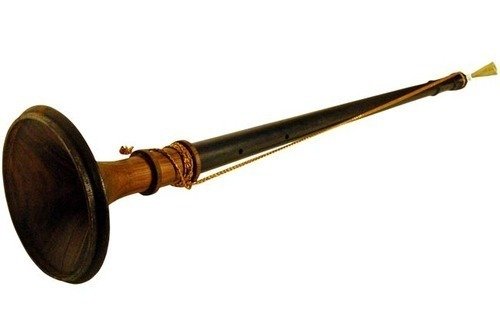
7. PAKHWAJ
The pakhavaj is a barrel-shaped, two-headed drum, originating from the Indian subcontinent, the oldest version of double sided drums and its descendants are mridangam of Southern India and kendang of Maritime Southeast Asia and other South Asian double-headed drums. Its older forms were made with clay.
Pakhavaj acquired a place of great importance in Hindustani music till the nineteenth century. It was the only accompanying instrument of the dhrupad style of singing and for the instruments played in dhrupad style such as been, rabab, sursingar and surbahar, etc., and thus was looked upon with great reverence. With the fall of dhrupad and with the advent of khayal in the late eighteenth and early nineteenth century, pakhavaj also lost its reigning position, and made way for the tabla. Pakhavaj is mainly an instrument to be played upon with open hand (thapi), which suppresses the delicateness of bols of khayal, thumri and sitar, whereas the tabla is played with fingers. It is a more supple and delicate instrument and suits the temperament of delicate and emotive kinds of musical forms such as khayal, thumri and sitar
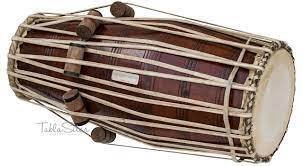 8. JALTARANG
8. JALTARANGThe jal tarang is a melodic percussion instrument that originates from the Indian subcontinent. It consists of a set of ceramic or metal bowls filled with water. The bowls are played by striking the edge with beaters, one in each hand
The earliest mention of the Jaltarang is found in 'Vatsyayana's Kamasutra' as playing on musical glasses filled with water.
Jal-tarang was also mentioned in the medieval Sangeet Parijaat text, which categorized this instrument under Ghan-Vadya (idiophonic instruments in which sound is produced by striking a surface, also called concussion idiophones.) The SangeetSaar text considers 22 cups to be a complete jal tarang and 15 cups to be one of mediocre status. The cups, of varying sizes, are made of either bronze or porcelain. Jal-tarang was also called jal-yantra in medieval times, and poets of the Krishna cult (also called Ashtachhap poets) have mentioned this instrument.
In modern days, it has fallen into obscurity. Literally, jal tarang means 'waves in water', but it indicates motion of sound created or modified with the aid of water. Among wave-instruments, it is the most prominent and ancient. This traditional instrument is used in Indian classical music. Some scholars think that in the ancient period these were in routine use around the eastern border of India.
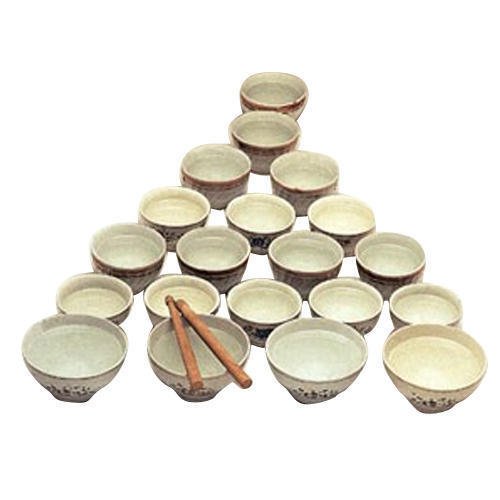 9. Khartal
9. KhartalUsually made of wood or metal, a khartal player will hold one 'male' and 'female' khartal in each hand. The 'male' khartal is usually thicker and is held with the thumb while the 'female' khartal is usually thinner and is mainly balanced on the ring finger, which represents the fire element.
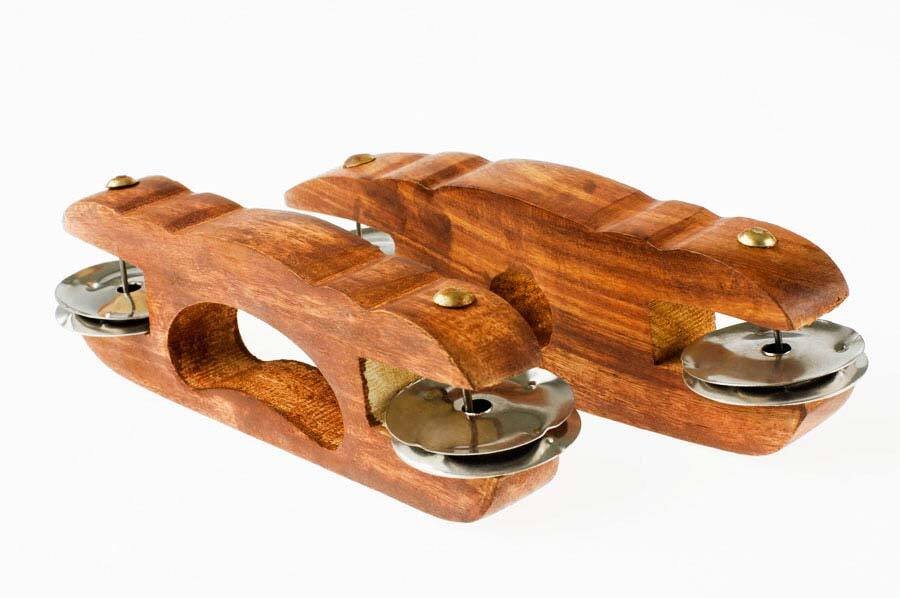 Where is Khartal from?
Where is Khartal from?Rajasthan, India
Overview. Khartal, also known as kartal or khar taal, is an idiophone percussion instrument originating in Rajasthan, India. It is classified as an idiophone because the entire instrument vibrates to produce a sound on it's own.
History. Kartal ('eagle' in Turkish, although etymologically inaccurate) was a fishing village on the shore of the Marmara Sea during the Byzantine Empire, called Kartalimen or Kartalimin in Greek, and was founded at the beginning of the 6th century.
What does the name Kartal mean?
Meaning of Kartal: Name Kartal in the Hungarian origin, means Kartal means Resembling an Eagle. Name Kartal is of Hungarian origin and is a Boy name. People with name Kartal are usually Christianity by religion.
9. RAVANHATA
A ravanahatha (variant names: ravanhatta, rawanhattha, ravanastron, ravana hasta veena) is an ancient bowed, stringed instrument, used in India, Pakistan, Sri Lanka, and surrounding areas. It has been suggested as an ancestor of the violin.
The ravanahatha's sound box may be a gourd, a halved coconut shell or hollowed-out cylinder of wood, with a membrane of stretched goat or other hide. A neck of wood or bamboo is attached, carrying between one and four or more peg-tuned strings of gut, hair or steel, strung over a bridge. Some examples may have several sympathetic strings. The bow is usually of horsehair; examples vary in length.
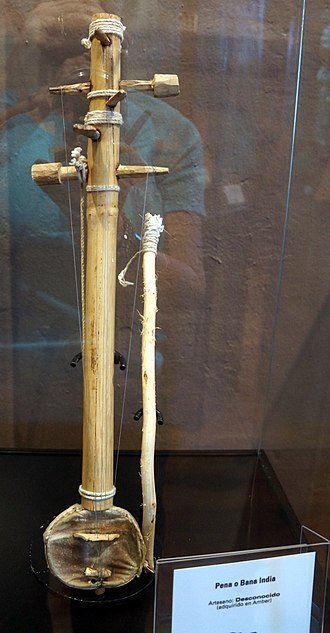
10. SARANGI
The sārangī is a bowed, short-necked string instrument played in traditional music from India – Punjabi folk music, Rajasthani folk music, and Boro folk music (there known as the serja) – also in Pakistan and Bangladesh. It is said to most resemble the sound of the human voice through its ability to imitate vocal ornaments such as gamaks (shakes) and meends (sliding movements). The sarangi (Nepali) is a different instrument, traditional to Nepal.
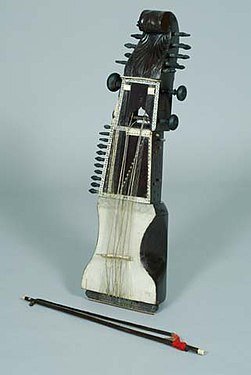
11. SAROD
The sarod is a stringed instrument, used in Hindustani music on the Indian subcontinent. Along with the sitar, it is among the most popular and prominent instruments.[1] It is known for a deep, weighty, introspective sound, in contrast with the sweet, overtone-rich texture of the sitar, with sympathetic strings that give it a resonant, reverberant quality. A fretless instrument, it can produce the continuous slides between notes known as meend (glissandi), which are important in Indian music.
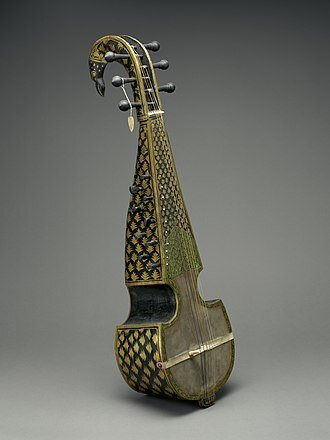
12. SHANKA
A Shankha has religious ritual importance in Hinduism. It is the shell of any suitable sea snail which had a hole made for the performer's embouchure. In Hindu history, the shankha is a sacred emblem of The Hindu preserver god Vishnu.
 13. SHENAI
13. SHENAIThe shehnai is a musical instrument, originating from the Indian subcontinent. It is made of wood, with a double reed at one end and a metal or wooden flared bell at the other end.[1][2][3] Its sound is thought to create and maintain a sense of auspiciousness and sanctity and as a result, is widely used during marriages, processions and in temples although it is also played in concerts. It was a part of the Naubat or traditional ensemble of nine instruments found in the royal court. The shehnai is similar to South India's nadaswaram.
This tubular instrument gradually broadens towards the lower end. It usually has between six and nine holes. It employs one set of quadruple reeds, making it a quadruple reed woodwind. To master the instrument, the musician must employ various and intricate embouchure and fingering techniques.
The shehnai has a range of two octaves, from the A below middle C to the A one line above the treble clef (A3 to A5 in scientific pitch notation).
A shehnai is often but not always made with a body of wood or bamboo and a flared metal end.
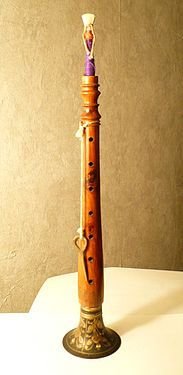
14. SITAR
The sitar is a plucked stringed instrument, originating from the Indian subcontinent, used in Hindustani classical music. The instrument was invented in medieval India, flourished in the 18th century, and arrived at its present form in 19th-century India
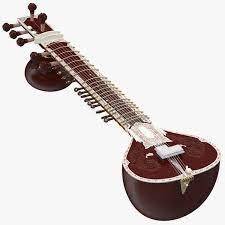
15. TABLA
A tabla is a pair of twin hand drums from the Indian subcontinent. Since the 18th century, it has been the principal percussion instrument in Hindustani classical music, where it may be played solo, as accompaniment with other instruments and vocals, and as a part of larger ensembles.
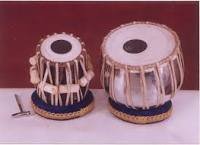
16. TANPURA
The tanpura (Hindi: तानपूरा) or tambura, tanpuri is a long-necked plucked string instrument, originating from India, found in various forms in Indian music. It does not play melody but rather supports and sustains the melody of another instrument or singer by providing a continuous harmonic bourdon or drone. A tanpura is not played in rhythm with the soloist or percussionist: as the precise timing of plucking a cycle of four strings in a continuous loop is a determinant factor in the resultant sound, it is played unchangingly during the complete performance. The repeated cycle of plucking all strings creates the sonic canvas on which the melody of the raga is drawn. The combined sound of all strings–each string a fundamental tone with its own spectrum of overtones–supports and blends with the external tones sung or played by the soloist.
Hindustani musicians favour the term tanpura whereas Carnatic musicians say tambura; tanpuri is a smaller variant sometimes used for accompanying instrumental soloists.
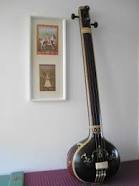
17. Tasha
Tasha is a percussion instrument made of wood, metal, brass, leather, cloth, and parchment. It is a folk instrument, mainly found in Jammu and Kashmir and also in various parts of North India. Majorly used in folk and traditional music and dance sequences of Jammu and Kashmir.
Tassa is a drum ensemble with ancient Persian origins, also known as Taash or Taasha drums. These drums disseminated to India with the Mughal migration, and from India spread worldwide with the Indian diaspora.
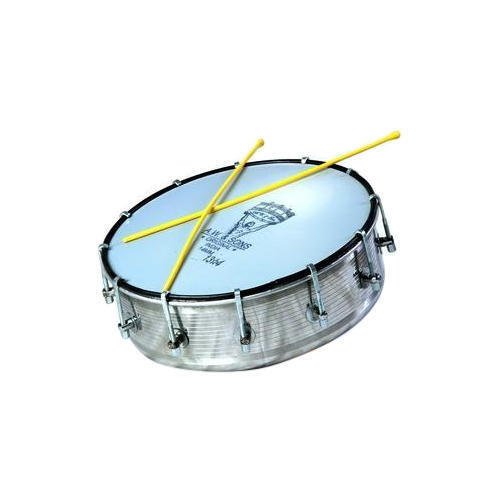 18. UDUKOI
18. UDUKOIThe udukkai, udukai or udukku is a member of the family of membranophone percussion instruments of India and Nepal used in folk music and prayers in Tamil Nadu. The drums are an ancient design of hourglass drums similar to the northern damaru and southern idakka
Udukku Kotti Pattu, is a traditional art form of Kerala where the vocal rendition of the song is accompanied by the Udukku rhythms. It has been reported that Udukku was popular in Jafna, Sri Lanka even during the 9th century
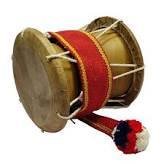
19. Veena
The veena, also spelled vina, comprises various chordophone instruments from the Indian subcontinent. Ancient musical instruments evolved into many variations, such as lutes, zithers and arched harps.
